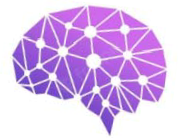
qEEG screening
Service code s9009
Short description
This type of screening examines the overall qEEG pattern which reflects general functional state of the brain. The functional state of the brain is the interplay between inhibitory and excitatory processes and (im)balance of regulatory systems of the brain. The inhibitory processes are responsible for suppression of neural electrical activity, whereas the excitatory processes enhance neural electrical activity. Regulation and balance between these two processes determines the main characteristics of human behaviour, adaptation to changing environmental conditions (especially in extreme situations) and is indicative of how well an individual uses his/her resources to carry out different brain functions.
Such psychophysiologically oriented electroencephalography is considered as functional electroencephalography.
Results
By performing this qEEG screening you will get the information on:
- your unique qEEG type,
- the presence and extent of any deviation (brain dysfunction),
- a detailed interpretation of every deviation (the likelihood of neuro-dysfunction or pathology) in qEEG (based on the published scientific studies).
Notes:
- The results of qEEG analysis are put in context of published scientific studies, the individual’s health history, complaints, symptoms and psychometric and other evaluations (if available).
- Present psychotropic medication use may affect the results.
To place a service order, use the following email:
References
- Basar E. Brain function and oscillations: I. Brain oscillations, principles and approaches. Berlin: Springer, 1998.
- Duffy F., Hughes J., Miranda F., Bernad P., & Cook P. 1994. Status of quantified EEG (qEEG) in clinical practice. Clinical Electroencephalography 25: VI-XXII.
- Gevins A. Electrophysiological Imaging of Brain Function. P. 175–188. In: Brain mapping. The methods. Toga A.W., Mazzoitta J.C. (eds). 2 edition. Elsevier Science (USA), 2002; pp. 877.
- Jirmunskaya EA. Clinical EEG. M., Maybe, 1991, pp. 77.
- Jirmunskaya EA, Losev VS. Systemic description and classification of human EEG. M., Nauka, 1984, pp. 79.
- John ER, Karmel BZ, Corning WC, Easton P, Brown D., Ahn H, John M, Harmony T, Prichep L, Toro A, Gerson I, Bartlett F, Thatcher R, Kaye H, Valdes P, Schwartz E. Neurometrics: Numerical taxonomy identifies different profiles of brain functions within groups of behaviorally similar people. 1977, Volume 196, Number 4297, 1393-1410.
- Knyazev GG, Slobodskaya HR, Safronova MV, Sorokin OV, Goodman R, Wilson GD. Personality, psychopathology and brain oscillations. Pers Individ Dif 2003; 35: 1331–49.
- Steriade M, Glooe P, Llinas RR, Lopes da Silva FH, Mesulam M.-M. Basic mechanisms of cerebral rhythmic activities. Report of IFCN Committee on Basic Mechanisms. Electroencephalogr and Clin Neurophysiol 199; 76: 481-508.
- Vakalopoulos C. The EEG as an index of neuromodulator balance in memory and mental illness. Front Neurosci 2014; 8: 63.